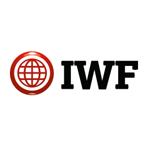 The battle against child abuse and child pornography is now being fought with new technology and the support of some of Silicon Valley's biggest companies.
The battle against child abuse and child pornography is now being fought with new technology and the support of some of Silicon Valley's biggest companies.
Google, Facebook, Microsoft, Yahoo!, and Twitter are working with the UK's Internet Watch Foundation (IWF) to implement a new system that will help detect and block online images of child pornography.
The charitable foundation has before introduced a new technology that enables others to tag images that contain abusive and explicit materials. The technology that was first developed by Google, enables tagging on images using codes as digital fingerprint in order to differentiate one from another.
Using the joined companies' database that contains thousands of known child sex abuse images, IWF compiled the images and give them their corresponding tags.
The tags hashes are generated automatically by an algorithm, Once they're assigned, the tags are unique, making the IWF easy to filter specific image against a list of offending hashes. The IWF keeps a record of all the hashes, which it has only shared with the five tech companies.
IWF is going to roll out to other IWF members soon.
Once the system is implemented, any image that is uploaded to the participating website is scanned. If the image has previously been tagged by the IWF, the system will detect its hash and automatically prevent it from being uploaded, and thus from being shared. So if anyone tries to share the tagged image on Google, Facebook, Microsoft, Yahoo! or Twitter, these companies will automatically detect the hash value and block the image.
The IWF estimates that it can currently remove 500 web pages that contain child pornography per day, with one web address containing up to thousands of images. As the number is constantly growing, the success of the project depends on how fast they can identify and tag the images.
The new system "could be a game-changer and really steps up the fight against child sexual abuse images online," said Susie Hargreaves, Chief Executive of the IWF. "It means victims' images can be identified and removed more quickly, and we can prevent known child sexual abuse images from being uploaded to the Internet in the first place."
The technology can put the distribution of child pornography to a minimal. However, the technology has yet to extend to other places on the internet. It can work as designed on the Surface Web, but on parts of the web where child pornography thrives: on the Deep Web, P2P networks and TOR, the materials are still out of reach.
Child pornography shown in a video cannot be tagged either, explained the IWF.
The technology also has other drawback. The internet is designed to be adaptive, and this will make the well-intentioned censorship difficult. Moreover, the system only blocks child sex abuse images that have been previously identified by IWF and added to its database. It is also possible to change the hash value by altering the image in some ways.
Many internet companies can make use of the hash list, including those that provide services such as the upload, storage or search of images, filtering services, hosting services, social media, chat services, data centers and connectivity services.
The initiative to implement this technology came after David Cameron, British politician and Prime Minister, announced tougher measures to combat online child sex abuse material back in November 2014, as well as technical solutions to prevent paedophiles from sharing those explicit images online and mobile.
The Prime Minister announced the creation of a new criminal offence of "sexual communication with a child", to close the loophole in the law.
Online child exploitation existed on an "almost industrial scale" worldwide, he said.